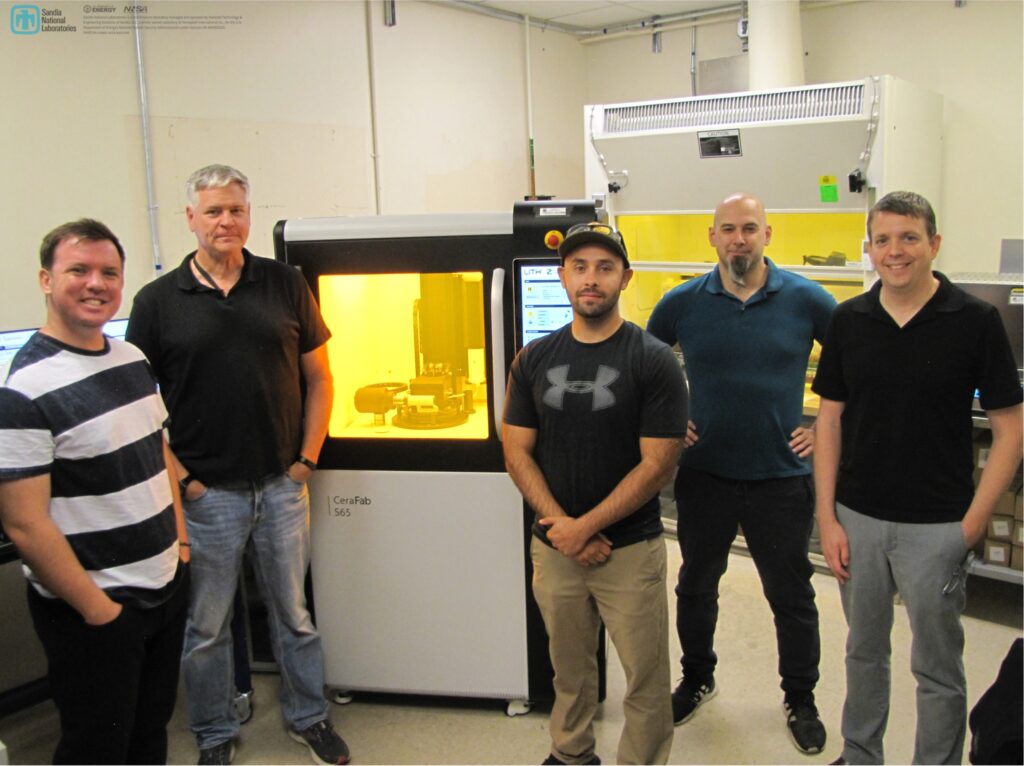- Sandia National Laboratories have acquired their second CeraFab LCM printer from Lithoz, world leader in ceramic 3D printing to greatly increase the research and development scale production efforts of ceramic subcomponents
- With their first Lithoz LCM printer, Sandia have already been able to print next-generation parts at a tenth of the cost of traditional production methods
- Sandia have now doubled their capacity to produce geometries unachievable using any other conventional ceramics machining processes available at their facilities
- Using the efficient Lithoz LCM 3D printing process, ceramic piece parts can be produced within a week versus Sandia’s standard processes which take months
31st July 2024: Vienna, Austria. Lithoz GmbH, world market and innovation leader in ceramic 3D printing, have installed a second industrial CeraFab 3D printer at Sandia National Laboratories facilities. As a direct result of Lithoz technology, Sandia can print piece parts with previously unachievable geometries at a far more rapid rate, producing components which normally take months within a week and at a tenth of the cost when compared to conventional production processes.
Sandia plan to greatly ramp up research and development into additively manufactured (AM) ceramics and scale up production efforts of optimized AM ceramic subcomponents using multiple Lithoz printers and ceramic materials. As an entirely new material for Sandia subcomponents, the attractive technical advantages (such as design flexibility and robust end pieces) of this material could unlock completely new applications.
The CeraFab S65, as Lithoz’s industrial level 3D printer, enables the serial 3D printing of highly complex ceramic parts. Thanks to the high degree of automation unlocked by Lithoz’s Lithography-based Ceramic Manufacturing (LCM) process, Sandia have reduced costs to just one-tenth of that of conventional methods. Due to the lack of tools, as well as the option to easily edit and improve designs, Sandia were able to significantly shorten development cycles from months to within a week, reducing cost and time risks and balancing the rapid scale of piece parts with the design needs of end-users.
‘By combining LCM technology with the attractive material properties of AM ceramic, Sandia have already opened the door to printing ceramic shapes and parts previously impossible to produce,’ said Shawn Allen, Vice President of Lithoz America. ‘We look forward to seeing their future achievements with the greater capacity of a second Lithoz printer!’
Lithoz Contact: Alice Elt +43 660 1563231 / aelt@lithoz.com

